When Must a Knife Be Cleaned and Sanitized
- January 30, 2024
- 0 comment
Cleanliness and sanitation are crucial in food preparation. Using a clean and sanitized knife not only ensures the safety and quality of the food but also prevents cross-contamination and the spread of harmful bacteria. This article explores the essential times and methods for cleaning and sanitizing knives, an often overlooked but vital aspect of kitchen hygiene.
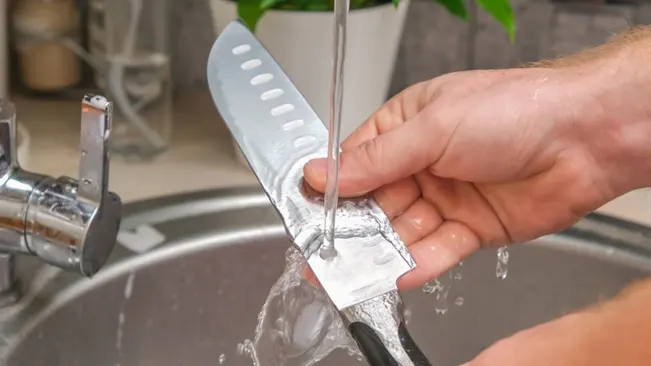
Understanding Knife Hygiene
Cleaning refers to the removal of dirt and debris from a knife’s surface, while sanitizing involves treating the knife to reduce the number of pathogenic bacteria. Both are integral to preventing foodborne illnesses. Knife hygiene is a simple yet effective line of defense against various health hazards.
When to Clean and Sanitize Knives
After Each Use
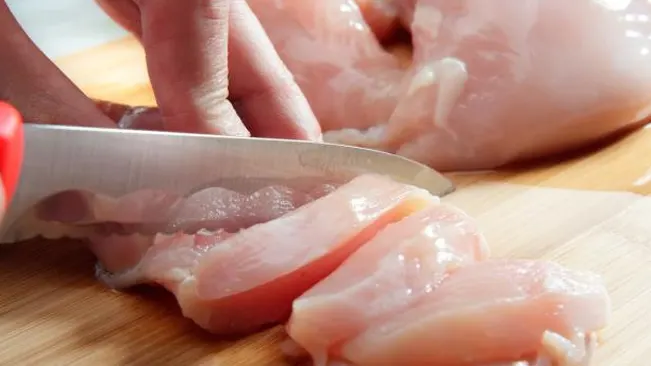
Every time a knife is used, it comes into contact with food particles and potential contaminants. Immediately cleaning and sanitizing the knife after use prevents the growth of bacteria and reduces the risk of foodborne illnesses. This practice is crucial, especially in a busy kitchen where knives are frequently used for various tasks.
When Switching Between Different Food Types
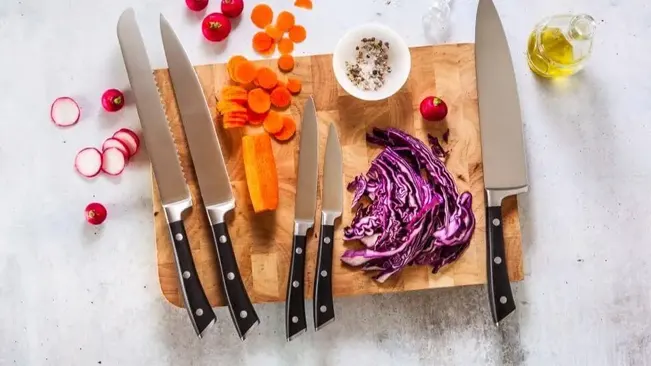
It’s essential to clean and sanitize knives when switching from one type of food to another. This is particularly important when moving from handling raw meats to vegetables or cooked foods. Raw meats often harbor harmful bacteria that can easily contaminate other foods, leading to cross-contamination. A thorough cleaning process eliminates these bacteria, ensuring that the knife is safe for use with other food types.
After Being Dropped or Contaminated
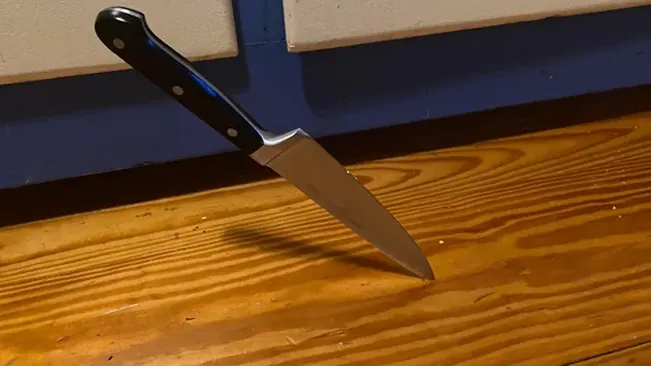
If a knife is dropped on the floor or comes into contact with an unclean surface, it must be immediately cleaned and sanitized before further use. Floors and surfaces can harbor various types of bacteria and contaminants, and using a contaminated knife can spread these to the food being prepared.
Before First Use Each Day
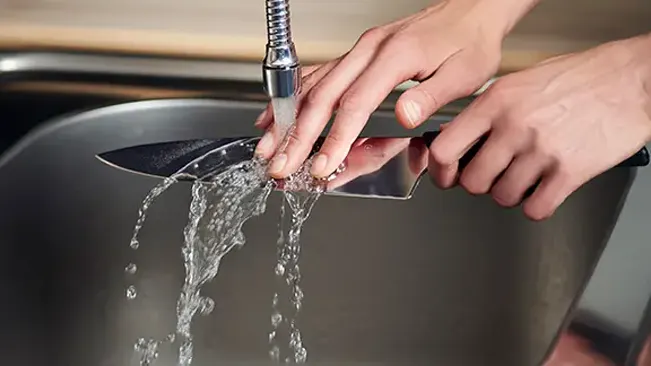
Knives should be cleaned and sanitized before their first use each day. Even if cleaned the previous day, knives can accumulate dust or other airborne particles overnight. Sanitizing knives before use ensures they are free from any contaminants that may have settled when not in use.
Periodically During Non-Use
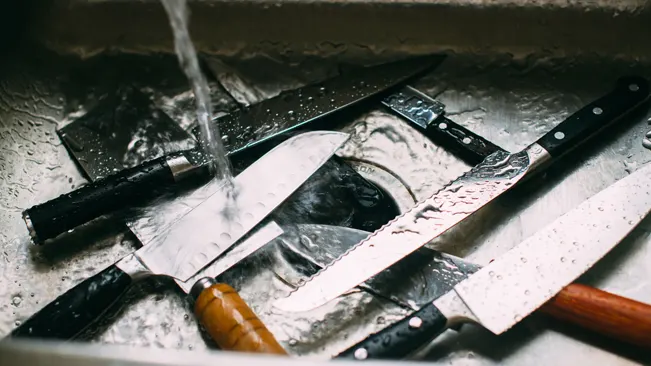
Knives that are not in regular use should still be cleaned and sanitized periodically. This practice is crucial in maintaining a high standard of hygiene, as it prevents the buildup of dust and potential rust, keeping the knives in optimal condition for when they are next used.
In each of these scenarios, the key is to ensure that the knife is not just visibly clean but also sanitized at a microbial level. This dual approach of cleaning and sanitizing is what makes the process effective in maintaining the highest standards of food safety and kitchen hygiene.
Proper Cleaning Techniques
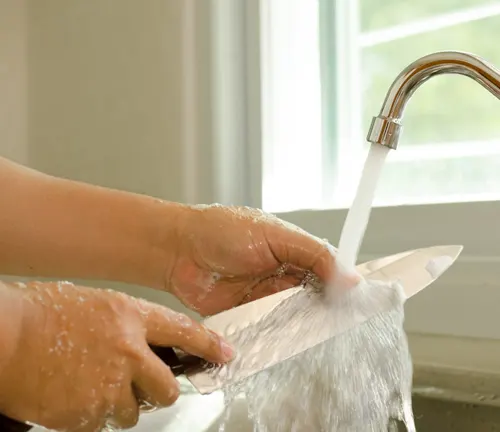
Rinsing with Warm Water
Begin by rinsing the knife under warm water. This initial rinse helps to loosen and remove larger food particles and debris that might be clinging to the blade and handle. Ensure that the water is not too hot, as extreme temperatures can damage certain knife materials.
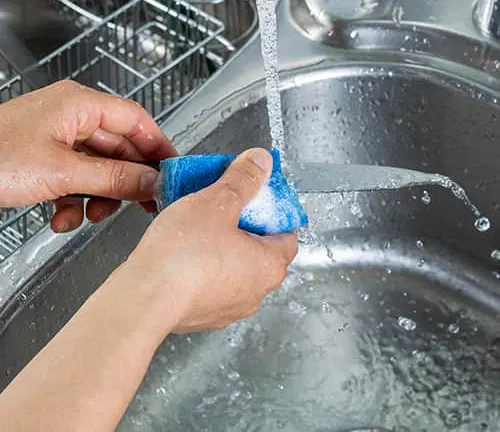
Gently Scrubbing with a Mild Detergent
Apply a mild detergent to a soft sponge or cloth. Gently scrub the blade and handle, paying close attention to any grooves or crevices where food particles might be trapped. It’s important to use a mild detergent as harsh chemicals can damage the knife’s material and dull the blade. Be cautious while scrubbing to avoid injury, always moving the sponge or cloth away from the edge of the blade.
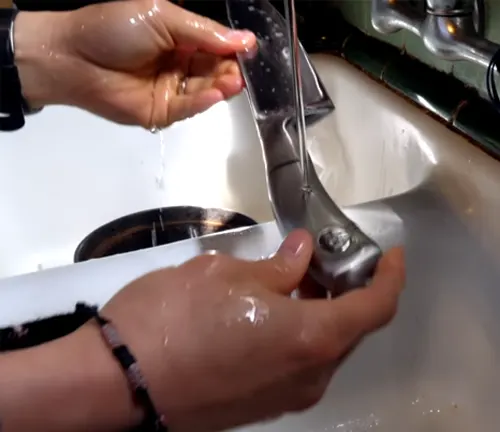
Rinsing Again to Remove Soap Residue
After scrubbing, rinse the knife thoroughly under warm water to remove all traces of detergent. Residual soap not only affects the taste of food but can also cause corrosion or damage to the knife over time. Ensure that the entire surface of the knife, including the handle, is free from soap.
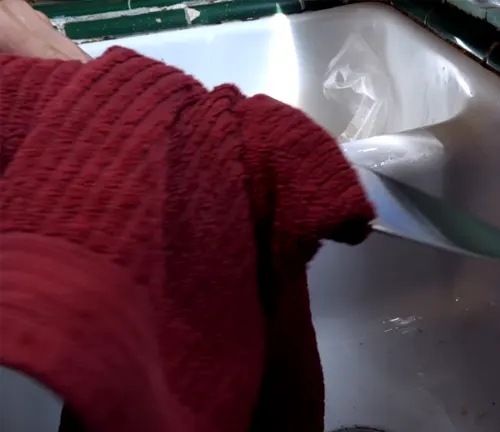
Drying with a Clean Towel or Air Drying
Dry the knife immediately after washing to prevent water spots and rust formation. Use a clean, dry towel to gently pat down the knife. Alternatively, you can let it air dry in a clean, well-ventilated area. Avoid using abrasive towels that might scratch the knife’s surface.
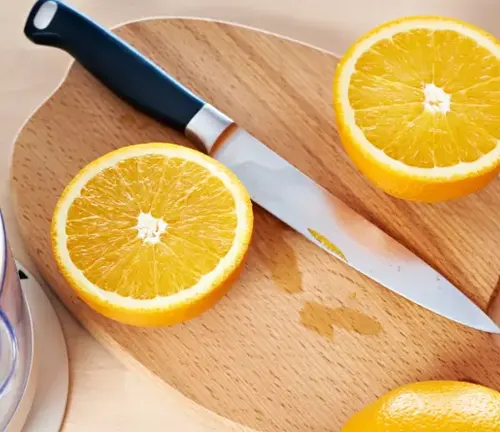
Selecting the Right Cleaning Agents and Tools
Choosing appropriate cleaning agents and tools is crucial. Avoid abrasive sponges or steel wool that can scratch the knife’s surface. Likewise, harsh cleaning chemicals should be avoided as they can corrode the knife material and affect its longevity.
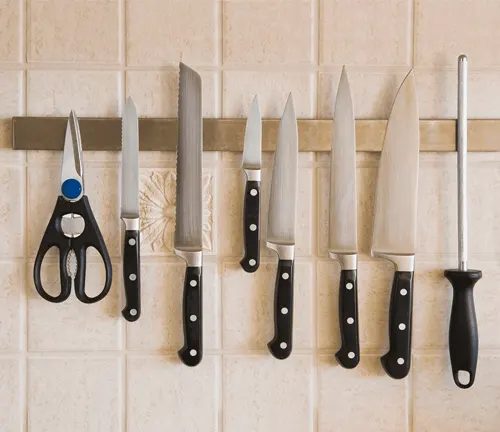
Proper Storage After Cleaning
Once the knife is clean and dry, store it in a dry, safe place. Knife blocks, magnetic strips, or individual sheaths are good options. Proper storage protects the knife’s edge from damage and also prevents accidents. Avoid storing knives loosely in drawers where they can get damaged or cause injury.
Following these steps ensures that the knife is not only clean but also maintained in a condition that prolongs its usability and effectiveness. Regular and proper cleaning not only contributes to food safety but also extends the life of the knife, making it a valuable practice in any kitchen setting.
Sanitizing Your Knife
Chemical Sanitizers
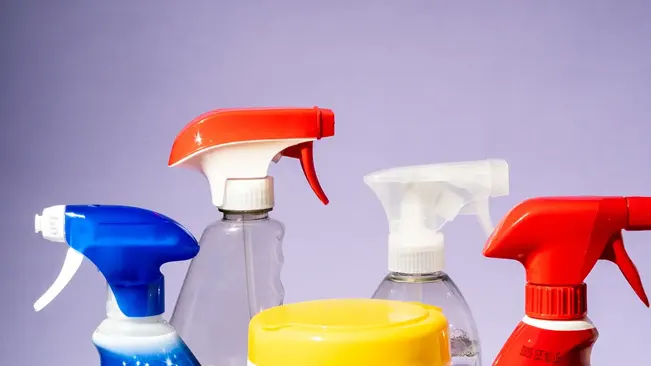
Chemical sanitizers, such as chlorine, quaternary ammonium compounds, or iodine solutions, are commonly used in commercial and home kitchens. It’s crucial to use these sanitizers according to the manufacturer’s guidelines regarding concentration, contact time, and safety measures. The concentration of the sanitizer must be strong enough to kill bacteria but not so strong that it leaves harmful residues or damages the knife. Using test strips to check the sanitizer’s concentration is a recommended practice. Additionally, knives should be thoroughly rinsed with clean water after sanitizing to ensure no chemical residue remains.
Heat Sanitization
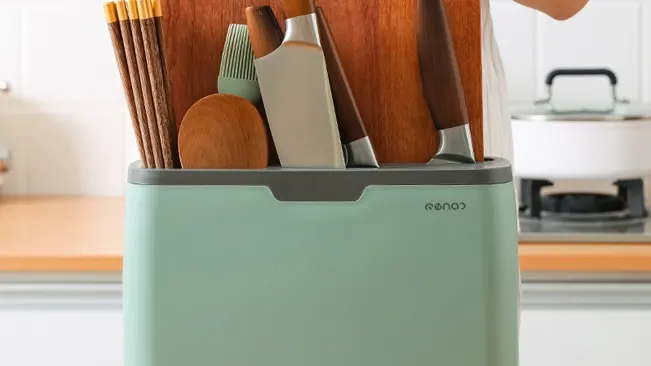
Heat sanitization involves using high temperatures to kill bacteria and other pathogens. This can be done by boiling knives in water for a set period, typically around 1-2 minutes, or by using a high-temperature dishwasher cycle. When boiling knives, it’s important to ensure that they are completely submerged in water and that the temperature is high enough to effectively sanitize. Dishwashers with a sanitizing cycle are also effective, as they maintain high temperatures long enough to kill most bacteria.
Safety Precautions During Sanitization
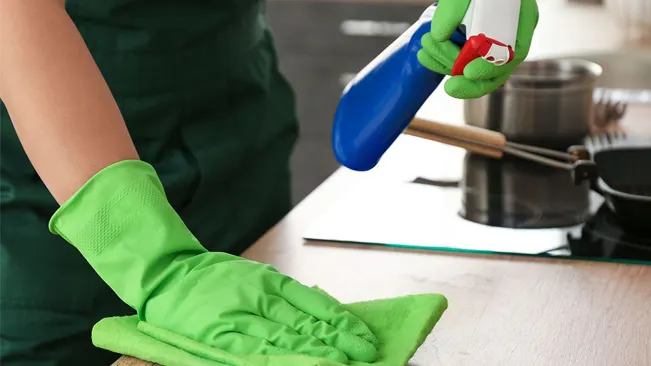
Safety is paramount during the sanitization process. When using chemical sanitizers, it’s important to wear appropriate protective gear, such as gloves and goggles, to prevent skin and eye irritation. Ensure the area is well-ventilated to avoid inhaling fumes. For heat sanitization, use caution when handling hot water or steam to avoid burns. Always use tongs or appropriate tools to remove knives from boiling water or a hot dishwasher.
Proper Handling Post-Sanitization
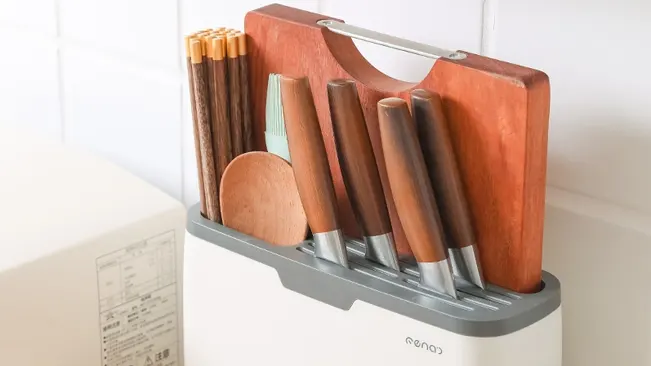
After sanitization, handle the knives with care to avoid contamination. Once a knife has been sanitized, it should be placed in a clean and sanitized area, away from potential contaminants. Ensure that your hands are clean before handling sanitized knives, or use clean utensils to move them.
Regular Inspection and Maintenance
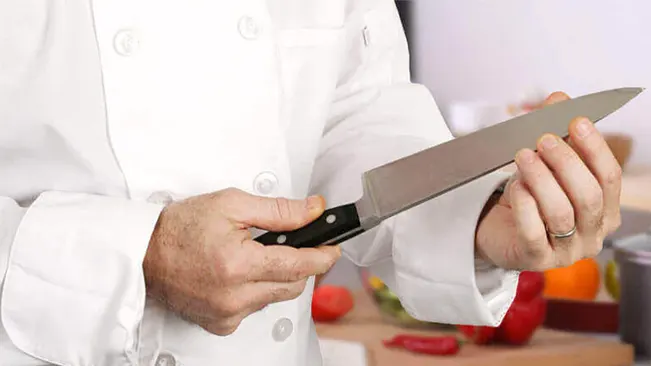
Regularly inspect the condition of your knives. Damaged or worn knives can harbor bacteria in crevices and may not be effectively sanitized by standard methods. Keeping knives in good condition is as important as the sanitizing process itself.
By incorporating these detailed steps into the sanitizing process, food handlers can ensure that their knives are not only visually clean but also hygienically safe for food preparation, thereby upholding the highest standards of food safety and kitchen hygiene.
Maintaining a Sanitary Work Environment
A clean knife is just one part of kitchen hygiene. A sanitary work environment includes regular cleaning of surfaces, proper food storage, and awareness of potential contamination sources. A regular cleaning schedule helps maintain an overall hygienic kitchen.
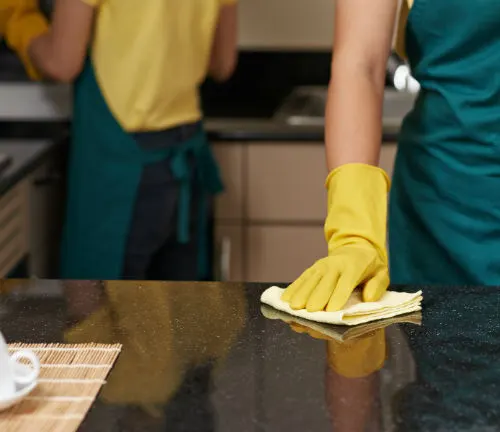
Regular Cleaning of Surfaces
Maintaining a sanitary kitchen requires diligent cleaning of all surfaces, including countertops, cutting boards, and appliances. Surfaces should be cleaned both before and after food preparation to prevent the spread of bacteria. Use appropriate cleaning agents, and consider using sanitizers on surfaces, especially after preparing raw meat or poultry.
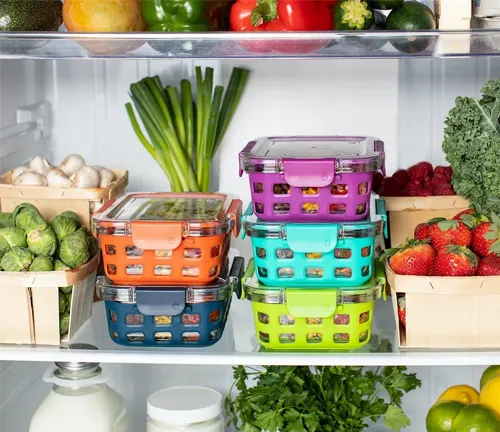
Proper Food Storage
Safe food handling extends to how food is stored. Refrigerate perishable items promptly, and keep raw and cooked foods separate to prevent cross-contamination. Ensure that all food items are stored in clean, sealed containers and at the correct temperature. Regularly check expiration dates and the condition of stored food to avoid the risk of using spoiled ingredients.
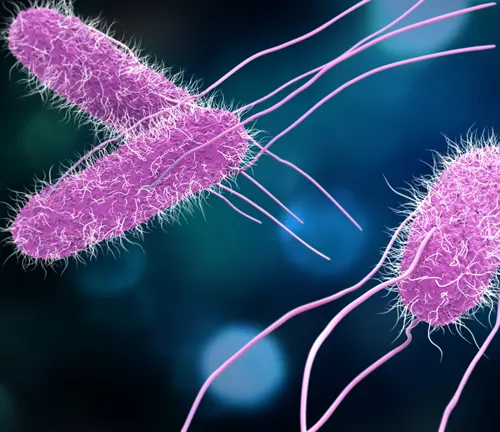
Awareness of Potential Contamination Sources
Be vigilant about potential sources of contamination in the kitchen. This includes not only food and surfaces but also kitchen tools, towels, and even personal hygiene. Regularly wash hands, change dishcloths and towels frequently, and avoid touching your face or hair while cooking.

Regular Cleaning Schedule
Implementing a regular cleaning schedule ensures that all aspects of kitchen hygiene are routinely addressed. This includes daily tasks like wiping down surfaces and washing dishes, as well as less frequent but equally important tasks like deep-cleaning appliances, descaling sinks and faucets, and decluttering storage areas.
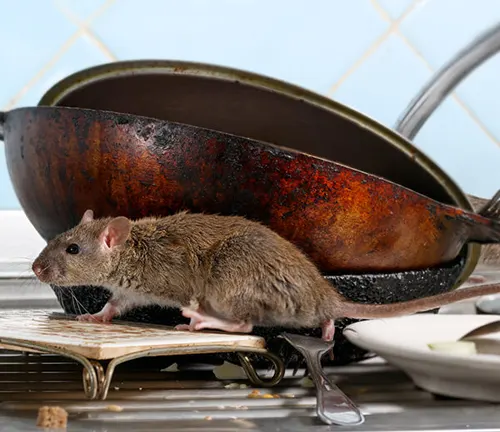
Pest Control and Garbage Management
Proper disposal of garbage and food scraps, along with measures to prevent pest infestations, are crucial. Ensure garbage is disposed of regularly and stored in sealed containers. Keep the kitchen free from crumbs and food spillages that can attract pests.
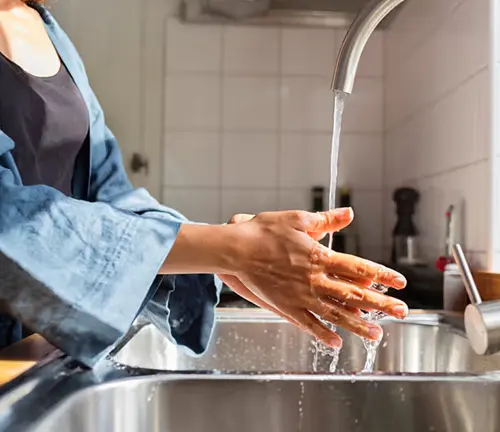
Personal Hygiene
Personal hygiene of those working in the kitchen is equally important. This includes regular hand washing, wearing clean clothing, and using hair restraints if necessary. Avoiding kitchen work when ill is also a critical aspect of maintaining a sanitary environment.
By expanding these points, the section provides a comprehensive guide to maintaining a sanitary work environment, highlighting that cleanliness in the kitchen extends beyond just the tools used to the environment itself and the practices of those working within it.
Conclusion
Regular and proper cleaning and sanitizing of knives are fundamental practices in maintaining food safety and hygiene. By adhering to these practices, food handlers can significantly reduce the risk of foodborne illnesses and ensure a safe dining experience for everyone. This commitment to cleanliness not only upholds high standards in food preparation but also reflects a deep respect for the health and well-being of consumers. Ultimately, such diligence in maintaining knife hygiene is a cornerstone of culinary professionalism, playing a crucial role in fostering trust and confidence in any food service establishment.
FAQs
- Why is it important to clean and sanitize knives?
Regular cleaning and sanitizing of knives prevent the spread of bacteria and cross-contamination, ensuring food safety and hygiene. - When should a knife be cleaned and sanitized?
A knife should be cleaned and sanitized after each use, when switching between different types of food, after being dropped or contaminated, before first use each day, and periodically during non-use. - What is the difference between cleaning and sanitizing a knife?
Cleaning removes visible dirt and food particles from the knife, while sanitizing eliminates most of the bacteria and pathogens on its surface. - Can I just rinse the knife under water to clean it?
Simply rinsing the knife with water is not sufficient. It should be washed with a mild detergent and then sanitized using appropriate methods. - What are some effective methods for sanitizing knives?
Effective methods include using chemical sanitizers, like bleach solutions, or heat sanitization, such as boiling the knife or using a high-temperature dishwasher. - How do I safely use chemical sanitizers on knives?
Follow the manufacturer’s instructions for dilution and contact time, and always rinse the knife thoroughly with clean water after sanitizing to remove any chemical residues. - Is it safe to sanitize knives in a dishwasher?
Yes, if the dishwasher has a sanitizing cycle that reaches the necessary high temperatures, it can be a safe and effective method for sanitizing knives. - How often should knives be sanitized if they’re not being used?
Knives should be sanitized periodically even when not in regular use, to maintain hygiene and prevent the buildup of any contaminants. - What should I do if a knife falls on the floor?
If a knife falls on the floor, it should be immediately cleaned and sanitized before being used again to avoid contamination. - Can improper cleaning of knives lead to foodborne illnesses?
Yes, improper cleaning and sanitizing of knives can lead to cross-contamination and the spread of foodborne pathogens, increasing the risk of illnesses.

Kerith Simon
As an expert with over ten years of dedicated experience in knife defense, my professional journey is anchored in a profound commitment to the safety and empowerment of individuals through specialized education. My expertise is not only grounded in practical self-defense techniques but also extends to a scholarly understanding of knife functionality, which I have meticulously documented in my authoritative series, This work stands as a testament to my deep engagement with the subject, offering readers critical insights into the nuances of knife selection and usage across various contexts. My approach to teaching and content creation is informed by a rigorous methodology and a continuous pursuit of knowledge, ensuring that the strategies and insights I provide are both effective and scientifically sound. Through a combination of hands-on workshops, comprehensive seminars, and well-researched publications, I strive to elevate the standard of knife defense education, making it accessible and reliable for those seeking to enhance their security and proficiency in this essential skill.

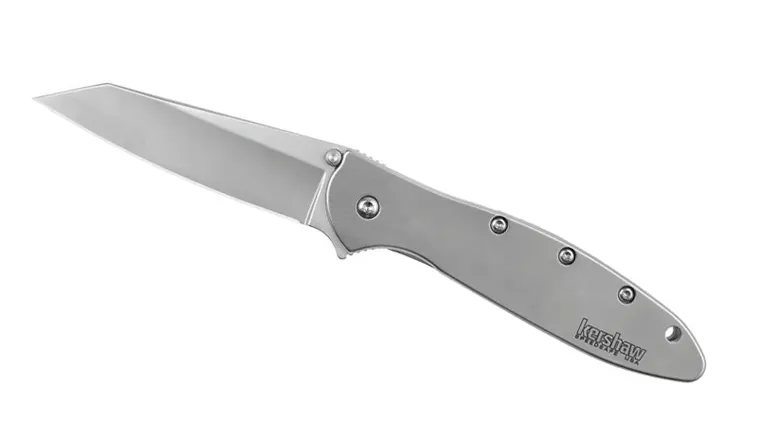

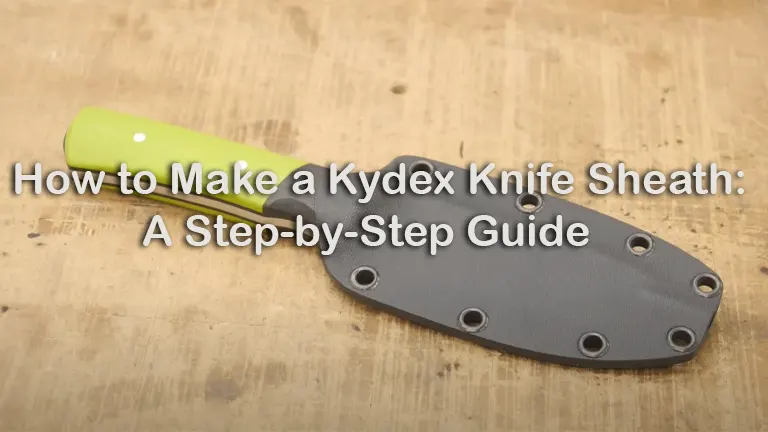
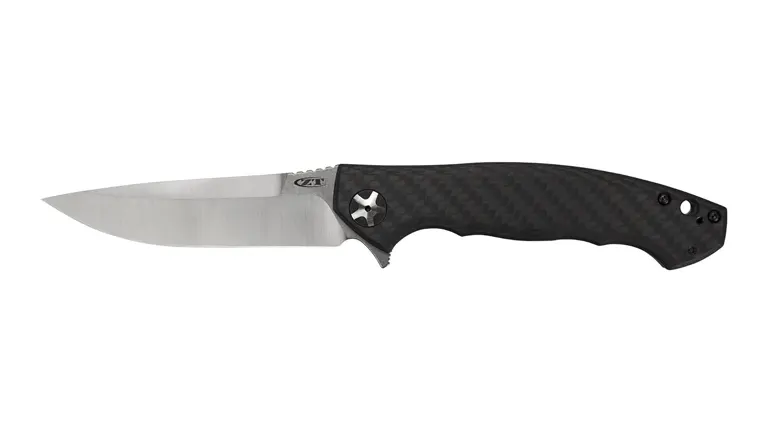


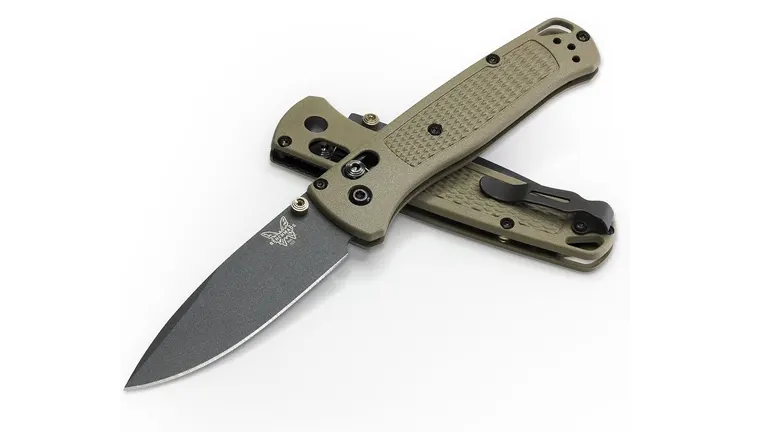
Leave your comment